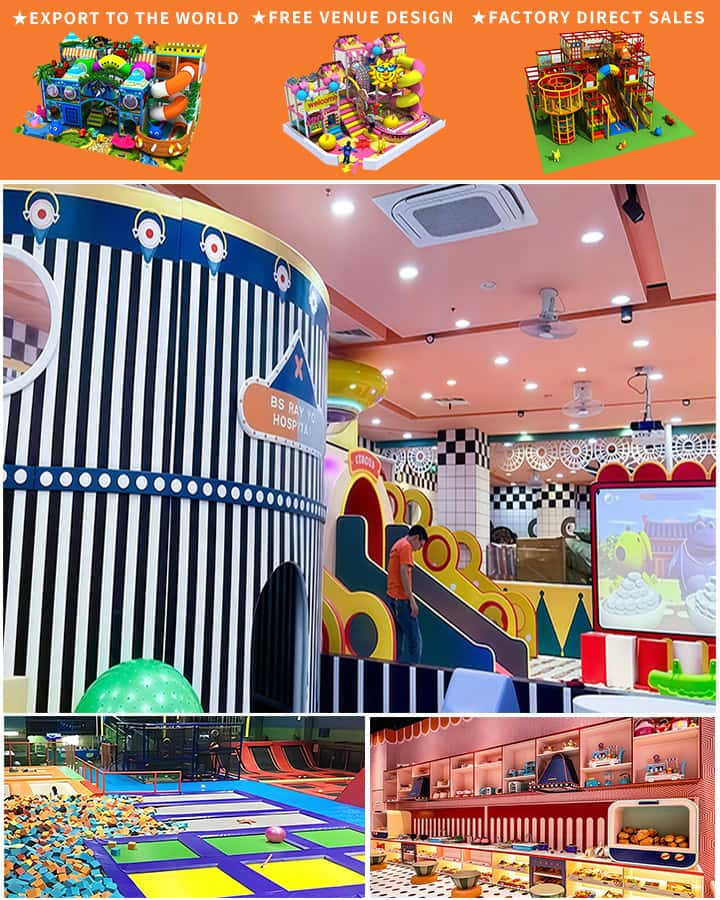In recent years, indoor trampoline parks have become a popular destination for families and individuals seeking fun, fitness, and excitement. These parks offer an excellent venue for exercise, socialization, and entertainment. However, designing an indoor trampoline park that stands out requires creativity, safety considerations, and innovative thinking. Here’s a closer look at some design elements that can make indoor trampoline parks more appealing and functional.
1. Themed Zones
One of the most effective ways to create an engaging environment is by incorporating themed zones. Each section of the park can be designed with a unique theme to cater to different age groups and preferences. For example, a “Galactic Adventure” theme could feature trampolines set against a backdrop of stars and spaceships, complete with glowing lights to simulate an interstellar experience. Alternatively, a “Jungle Safari” theme could include greenery, faux animal sculptures, and jungle-inspired decorations. These themes not only enhance the visual appeal but also provide a storyline that visitors can immerse themselves in.
2. Safety First
While creativity is important, safety should always be a top priority in indoor trampoline park design. High-quality materials should be used for trampolines, foam pits, and other equipment to ensure durability and reduce injury risks. Additionally, clear signage indicating rules and guidelines should be strategically placed throughout the park. Trained staff should always be present to supervise activities and enforce safety protocols. Incorporating soft landing surfaces around all trampoline areas is another crucial safety measure that cannot be overlooked.

3. Integrated Technology
Modern technology can significantly elevate the visitor experience in an indoor trampoline park. Interactive games, such as digital scoreboards or augmented reality (AR) experiences, can add an extra layer of fun and competition. For instance, AR can transform the jumping area into a virtual game zone where players jump over obstacles or collect points. High-tech features like motion sensors and LED lighting systems can also be integrated into the design to create dynamic environments that react to movement and sound.
4. Versatile Spaces
Designing versatile spaces within the park allows it to host various events and cater to different groups. Foldable or adjustable partitions can help divide larger areas for private events, parties, or group activities without permanently altering the layout. Multi-functional equipment, such as trampolines that double as seating during events, maximizes the utility of available space. This flexibility makes the park more attractive for diverse bookings, from children’s playdates to corporate team-building exercises.
5. Spectator Areas
Including comfortable spectator areas is essential, especially for parents who want to watch their children or for visitors who prefer not to participate actively. Raised platforms, café-style seating, and designated viewing windows can offer unobstructed views of the main trampolining areas. Offering amenities like Wi-Fi and charging stations in these areas ensures that non-jumping guests remain entertained and connected.
6. Sustainability
Incorporating eco-friendly materials and energy-efficient technologies demonstrates a commitment to sustainability. Solar panels on the roof, energy-efficient lighting, and recycled building materials are just a few ways to minimize the environmental footprint of the park. Educating visitors about these efforts through informative displays can foster a sense of community and responsibility towards the environment.
7. Accessibility
Making the park accessible to everyone is crucial for creating an inclusive environment. Ensure that all areas are wheelchair-friendly and provide accommodations for people with disabilities. Ramps, elevators, and accessible restroom facilities should be standard features. Additionally, consider offering sensory-sensitive sessions for visitors with autism or other sensory processing conditions.
Conclusion
Creating a successful indoor trampoline park involves balancing innovation with practicality. By focusing on themed zones, safety, technology integration, versatility, spectator comfort, sustainability, and accessibility, designers can build vibrant, engaging spaces that captivate visitors of all ages. Thoughtful planning and creative execution are key to developing an indoor trampoline park that not only provides endless fun but also stands out in a competitive market.




